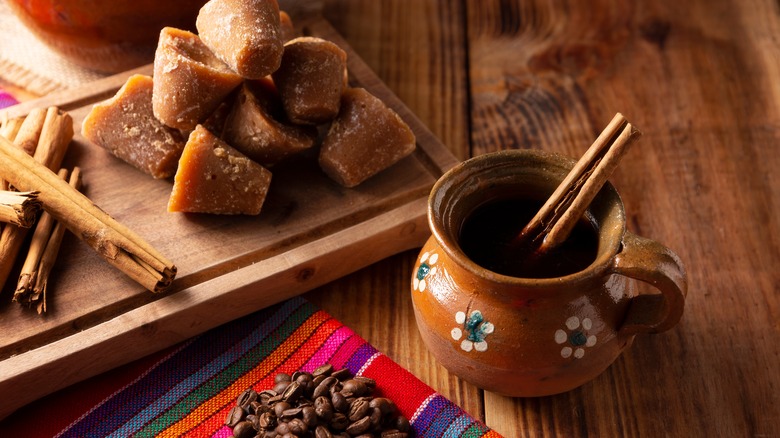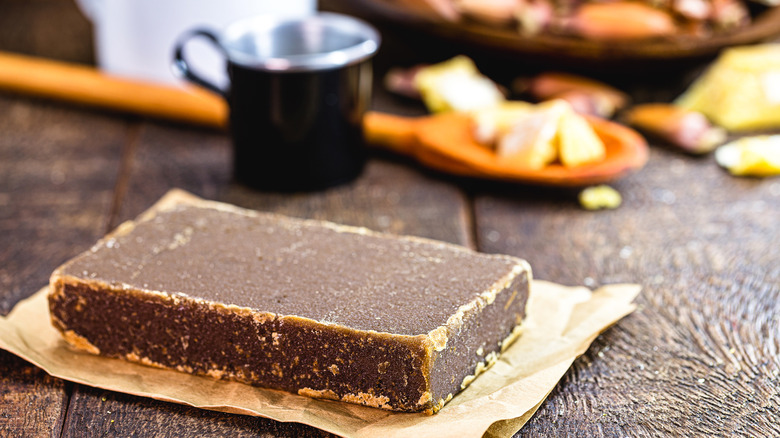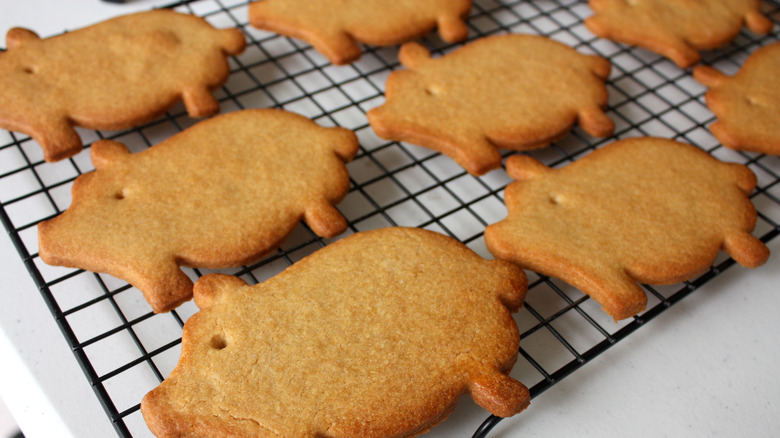Piloncillo Is The Staple Latin American Sugar You Need To Know
It's no secret that refined white sugar has a long, ghastly history — one whose mass production began on the autonomous Portuguese island of Madeira in the 15th century, per The Conversation, and whose popularity in Europe and the United States gave rise to horrific numbers of enslaved Africans in Central and South America, the West Indies, and the American South. But when it comes to adding sweetness to food, processed granules are only the tip of the iceberg. Artificial sugar substitutes notwithstanding, there are many different natural ingredients that can serve as replacements for white sugar.
Think of monk fruit, derived from plants in southern China. Unlike your average cup of sugar, Cleveland Clinic says monk fruit may sweeten the deal (see what we did there?) by providing antioxidants and other health benefits. (Scientists in the U.S. are still looking into the new-to-market product.)
In Mexico and Central America, another ingredient reigns supreme. Piloncillo, a staple in Latin American cuisine, doesn't resemble anything close to the pourable powder used in most American sweets.
Minimal process, deep sugary flavor
The process of transforming sugarcane into granulated white sugar is no simple feat. Michigan State University explains that juice is extracted from sugarcane, filtered with slaked lime, and boiled into a syrup that form crystals, which are then spun and dried in hot air. By comparison, the process of making piloncillo (also called panela) involves minimal tampering.
In a nutshell, explains Martha Stewart contributor Kirsten Nunez, piloncillo is another name for unrefined whole cane sugar. Crushed cane juice is boiled into a condensed syrup and poured into molds, which is how it's sold. When it's time to use it in a recipe, all you need is a grater.
Thanks to the naturally occurring molasses in sugarcane leaves, piloncillo has a deep brown color and an "intense caramel flavor," LA chef Traci Weintraub said to Nunez. Processed brown sugar also contains molasses, but only after it's been bleached out and added back in. As a result, the brown sugar sold beside its snowy-white counterpart lacks piloncillo's complexity of flavor.
A perfect sweetener for pan dulce, champurrado, and more
Because of piloncillo's high melting point, Isabel Eats says it's ideal for cooking, baking, and mixing into hot drinks. It can be used to replace white or brown sugar in any recipe, says the outlet, but a few signature Mexican treats really make it stand out. One of them is the seasonally appropriate Mexican ponche, a sweet Christmastime punch infused with apples, pears, oranges, guava, and spices such as cinnamon, cloves, tamarind, and hibiscus.
If you're getting wrapped up in holiday cookie season, you could make cochinitos de piloncillo, adorable pig-shaped versions of Mexican pan dulce, to dip in the punch. The cookies make use of Mexican canela (a kind of cinnamon native to Mexico), vanilla, star anise, cloves, orange zest, and ginger, per a recipe on the food blog Mexican and Meatless.
If you'd rather pair your cochinitos de piloncillo with a warm beverage, try café de olla. Like the punch, Isabel Eats says the Mexican coffee is spiced with cinnamon, cloves, and star anise (and sweetened with piloncillo, of course) and is usually served in a traditional Mexican clay pot.


